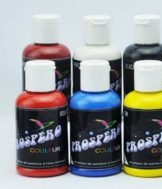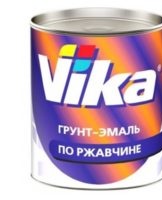Top 7 Types of Fabric Dyes and How to Apply Them at Home
If worn and torn clothes need to be thrown away, those that are discolored can be restored at home. In the modern market there is a wide range of fabric dyes suitable for monochrome and multi-color dyeing, creating patterns. To choose the right dye for clothes, you should pay attention to the composition of its components, properties and purpose.
What fabric can be re-dyed
Don't rush out to buy fabric dye without looking at the label on the garment to see what material it's made of. For each material, there are the most suitable dyes and the best dyeing methods. In the absence of a label and inability to understand the origin of the canvas, give preference to universal paints.
Natural fabrics are easiest to dye: linen, silk, cotton, wool. It is not difficult to dye natural synthetic clothes, in which the natural fiber contains at least 40%. It is impossible to dye a synthetic fabric at home, the paint will flake off on the first wash, for a reliable result you will have to go to a dry cleaner.Although persistent dyes for synthetics have already been invented.
White fabric can be dyed any light or dark color. A dark canvas can only be restored to its original color saturation, and discoloration is required for a full repaint.
The amount of ink that can be absorbed by a fabric depends on the density and structure of the fibres. The most sensitive fabrics are cotton and denim, any dyeing method is suitable for them. Boiling negatively affects silk and wool, so dyeing in a washing machine on a gentle setting is the best option.
Forms of production of textile paints
Fabric dyes are sold in powder, liquid, paste, marker and aerosol form. The first three forms are optimal for monochromatic coating of the canvas, markers are a means of applying drawings, and spray paints are convenient for creating a variety of shades.
Depending on the stability of the coating, the textile paint can be washed off and indelible. The first is used for temporary decoration of clothes so that they peel off, 2-3 washes are enough. Waterproof paint is intended to color or restore the saturation of the canvas for a long time.
Varieties of paints by pigment
The choice of fabric dyes in stores is exceptionally large, it is difficult for an ignorant person to understand the assortment. For an easier choice, see the quality characteristics, advantages and disadvantages of dyes.
Acrylic

Acrylic is the best paint option for silk, wool, and cotton fabrics. The composition of the components - water and pigments - is harmless to humans. The structure of the paint is such that it can be used to embody any artistic ideas on the fabric.You can paint any product: wardrobe items, curtains, tablecloths, napkins, decorative pillows. First you need to draw a sketch with a pencil, and then paint with a brush.
The dried coating becomes indelible, but machine washing is undesirable. Better to wash by hand, and the water temperature should not exceed 35°C.
The most popular manufacturers: Decola, Marabu, Dylon, Simplicol, Pebeo. Acrylic paint with interesting effects is made: pearly, silvery, luminous, with glitter.
Aniline
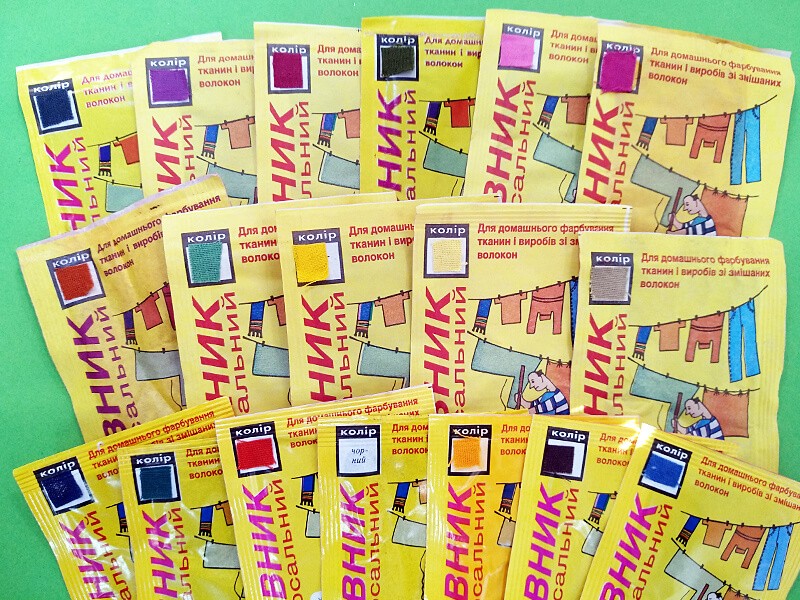
Indelible synthetic dyes are optimal for single-color dyeing of natural fabrics: silk, linen, cotton, wool. Sold for home use, in liquid and powder form. The latter is intended to be dissolved in water. To fix the pigment to the fabric, the garments are boiled in a pigment solution, dried, steamed, and finally washed several times to remove excess dye.
Many years ago, aniline dye was in demand for dyeing jeans. Therefore, manufacturers produced the largest quantities of products in the corresponding colors: blue, black, gray.
Stamp

High-durability paints are intended for labeling government-owned fabrics, for example, hotel linens. The most popular colors are black and blue. By chemical composition, dyes for fabric stamps are divided into several types with different operational properties: alcohol, oil, transparent (for hidden marks visible only in ultraviolet light), water-glycerin.
Plastisol
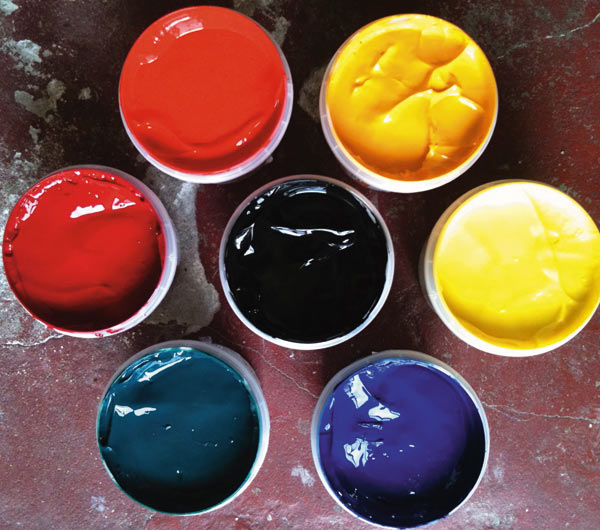
Solvent-free PVC-based paints cover the fabric with an elastic, moisture-resistant film. With their help, prints are created on textiles.
Plastisol-based fluorescent and reflective fabric inks are available. With their help, they create patterns on clothes that glow in the dark, either invisible during the day or flashing in different colors at night.
Cubic
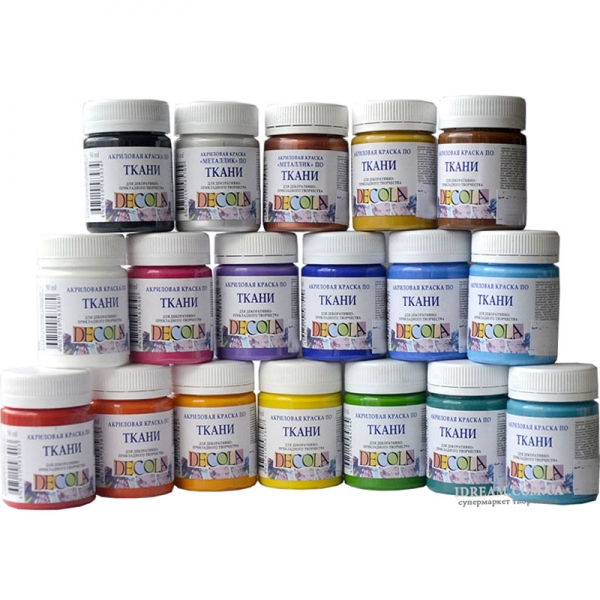
The composition of textile dyes, produced in the form of powder and paste, includes pigments, surfactants, dispersing and wetting components that contribute to uniform coloring.
The paint does not dissolve with water; to pass to the soluble state, it must be treated with an alkali, for example a solution of soda. The fabric is soaked in this solution, then it is subjected to oxidation so that the pigment is fixed, again going into an insoluble state. Acetic water can be used as an oxidizing solution.
Natural dyes
In the old days, when synthetic dyes did not exist, people used natural pigments to dye fabrics. Even today they can be interesting for decorating clothes in ethnic and bohemian style. There are many sources of natural pigments in nature: yellow - citrus peels and turmeric, brown - oak bark and cinnamon, purple - beets and blueberries, blue - blackberries and sage flowers, and many others.

To dye fabric, add enough pigment to water to achieve desired color saturation, immerse garment, heat to 60°C, but do not boil. Keep the product in the solution at this temperature for 30-40 minutes. To fix the dye on the fabric, use a 1% solution of potassium dichromate, copper sulphate or tin chloride, soak the product in the liquid for 5 minutes, then rinse well.
Vibrant paintings

There are fluorescent and fluorescent fabric dyes. The first pigment is a phosphorus. It accumulates solar ultraviolet light during the day and emits it in the dark. Fluorescent paints contain special substances that emit light when exposed to ultraviolet light. Compositions are used to create combinations and club accessories. There are products with a metallic effect to which fine particles of glitter are added.
Home staining methods
At home, the fabric can be dyed manually or in the washing machine. The choice of method is determined by the type of paint: carefully read the instructions on the container.
Prepare the fabric before painting. Immerse the product for one hour in a container of cold water, then wash with your hands, rinse. Dry, iron dense fabric with a medium hot iron, hang thin fabric flat to dry on the bar.
In the washing machine
The method is simple, optimal if you need to get the job done quickly. The main thing is to read the composition of the paint, it should not contain aggressive components that can damage the washing machine. After painting, wash the inside of the machine 2 times (activate washing with an empty drum).
Otherwise, the incompletely washed pigment particles will damage the clothes in subsequent washes.
Learn how to dye fabric using the popular Simplicol dye as an example. The color palette shown on the package is achieved by dyeing white pure cotton garments. Pre-bleach colored fabric. The higher the percentage of synthetic fibres, the paler the result.
To dye clothes in the washing machine:
- Place it upside down in the drum.
- Unseal the bag. Do not empty the contents into the drum, but place it on your clothes.
- Set the recommended washing temperature for your clothes.
- Set the standard wash cycle. Wash the product as usual.
- Add detergent or gel to set the dye. Don't touch your clothes.
- Wash again in the usual way.

Manually
For proper hand dyeing, follow the directions on the fabric dye package. If there are no instructions, use the universal algorithm:
- Take a large aluminum pot. Use soft water - rainwater or settled water. If you take water directly from the tap, add baking soda as an emollient component - a 10-liter tablespoon.
- Dissolve the dye in the amount indicated on the package for a specific volume of water.
- Immerse your clothes in the solution. Put on low heat, stir constantly, wait until boiling. Keep in the dye for at least 20 minutes (the longer the more intense the color will be).
- If you're using aniline dye, add 3 to 5 heaping tablespoons of salt to finish setting the pigment to the fabric.
- Turn off the fire. Leave the product to cool in the pan.
- Dry the product in a shaded place at room temperature.
- To remove excess pigment, rinse the garment several times until the water runs clear.
Wash the dyed garment the first 3-4 times separately from the rest of the garment, as there may be a slight release of pigment.
Acrylic paints can be painted onto fabric in the usual way, i.e. with a brush. If you lack artistic skills, use a stencil. Place a piece of cardboard between the front and back of the garment to avoid staining areas that cannot be stained.
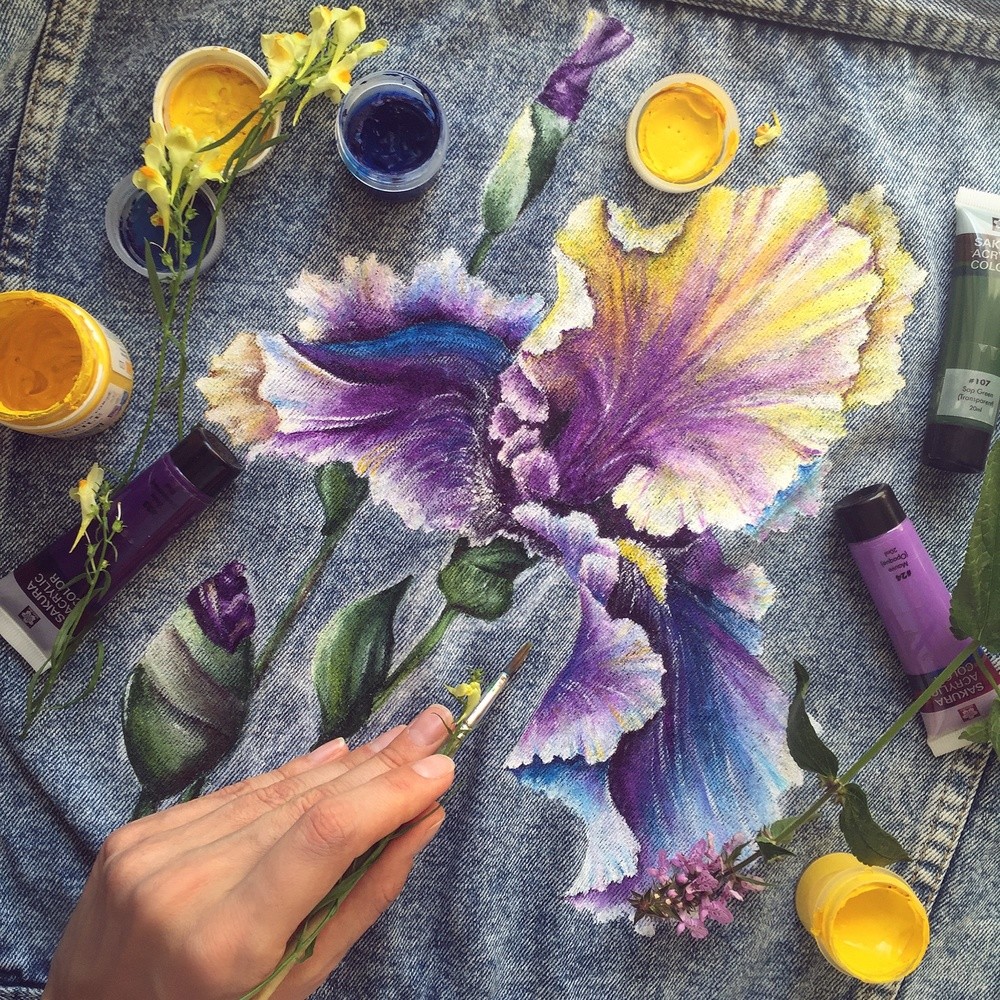
The technology of painting things from different materials
Read on for tips on how to successfully dye your fabric.
Cotton
Dye cotton garments only with fresh water. To fix the color and prevent loss, rinse in a weak vinegar solution - a 5 liter tablespoon.
Linen
When dyeing linen textiles, add a spoonful of salt to the container with the solution. This will ensure high quality and uniform dyeing of the knit.
Wool
For dyeing woolen products, aniline dye is optimal, on the packaging of which there is a corresponding mark. Acrylic paint is undesirable, the pigment does not penetrate well into the fiber structure and breaks. Use a vinegar solution to fix the aniline to the wool.
Silk
Wash and rinse the silk product before painting. This is necessary to remove impregnation from the surface of the new product and residual particles of household chemicals from the used one.
Synthetics
Dyeing synthetic fabrics at home is problematic. The practice of starching the tulle fabric to set the pigment.
Viscose
It is impossible to paint viscose fabric with natural dyes.
When choosing a fabric dye, pay attention to 4 main factors: chemical composition, suitable fabric material, purpose, preferred method of application. It is more convenient to dye clothes in the washing machine at home. If in doubt about the possibility of obtaining the desired result, it is better to contact a dry cleaner.

